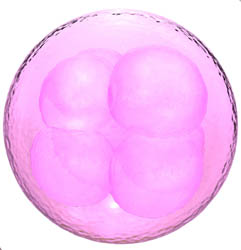Embryonic stem cells for liver disease therapy
Chronic liver disease is a life-threatening condition that ranks fifth among the leading causes of death in Europe. Currently, liver transplantation is the only effective treatment but post-surgery complications and immunosuppressive drugs pose substantial risks for patients. This clearly shows the urgent need for new, more effective treatments. Clinical trials with transplanted hepatic cells have shown promising results of liver function restoration, thereby suggesting this approach as a viable alternative to organ transplantation. However, given the fact that these cells will only divide once or twice, for such a therapy to be implemented for chronic liver disease a renewable source of functional human hepatic cells must be developed. As a solution to this, the EU-funded ′Development of culture conditions for the differentiation of hES cells into hepatocytes' (LIV-ES) project proposed the use of human embryonic stem cells (hESCs) developed by a reproducible, clinically-compatible method free of animal products. The advantage of using hESCs lies in their ability to grow indefinitely in vitro while maintaining the capacity to differentiate into all cell types, including hepatocytes. Among the technological advances of the project was the development of novel animal-free reagents and three-dimensional (3D) matrices for directing the differentiation of hESCs to hepatic cells. Novel biomaterials that support both the growth and differentiation of hESCs were developed alongside a step-wise, chemically defined protocol for efficiently directing hESCs to early-stage progenitors that are committed to the hepatic lineage. Transcriptome analysis of hepatocyte progenitors and differentiated cells revealed essential information on key genes and microRNA molecules implicated in the differentiation process. A methodology for purifying these hepatic progenitors from adult and foetal liver and for expanding them in vitro was also generated. When cultured under differentiating conditions, these hepatic progenitors yielded functional hepatic cells that expressed albumin and the major liver detoxifying protein cytochrome P450. Furthermore, upon administration in animal models, these cells demonstrated engraftment capacity. LIV-ES project results provide the necessary framework for culturing and isolating hepatocytes to be used for regenerative cell therapy of chronic liver disease. Importantly, the developed methodology will establish hESCs as invaluable tools for delivering cell therapies to the clinic.







